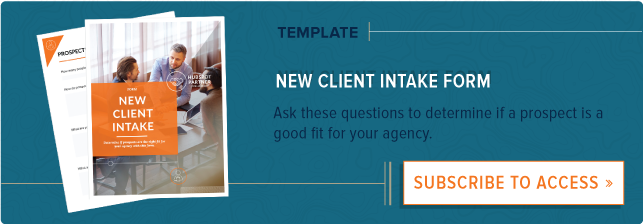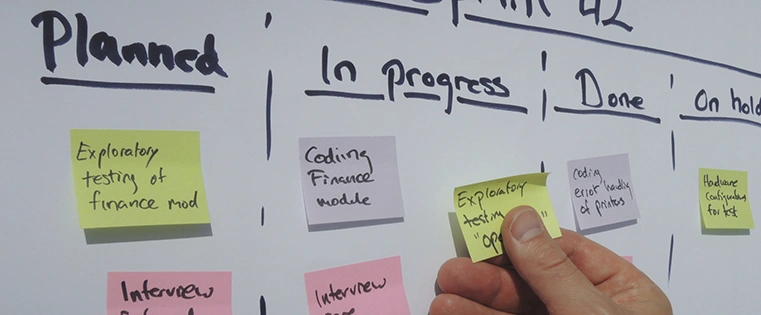

Maybe you’ve heard the term "Agile." Maybe you’ve even read the de facto bible of one of the more popular facets of Agile, Scrum: The Art Of Doing Twice The Work In Half The Time. Perhaps you’ve been looking for a more efficient, effective way of managing and completing projects.
Our team began to implement Agile project management more than two years ago, and in that time, we’ve learned a tremendous amount about what works for us and how going Agile affects our business. In short, Agile has made our agency more predictable and significantly more efficient. It’s allowed us to properly plan for capacity more effectively. Scrum has made our work better since our process is now more collaborative than ever.
But, it’s not for everyone, and we’ve made a ton of tweaks and adjustments along the way. So, how best to get started with Agile? Here are five things we’ve learned as we went from using waterfall project management to an Agile process:
1) Try a project using Agile methodology first.
You’ll never really understand the difference Agile can make in your processes until you try it. But it’s hard to fully implement without completely upending your agency. So, pick a project that makes sense to use Agile (a new website build is a good choice as it’s a compartmentalized project that has a beginning and an end).
Kula actually "stumbled" across Agile when working on a web development gig with a crazy deadline a number of years ago. We divided our tasks up into micro-deliverables and assigned small teams to work on these tasks concurrently. The team worked closely together, executing on each task and iterating on the design and development until that specific feature worked well. Then, they moved on to the next chunk of work. Our team completed that project, which had significant technical complexity, faster than any project of that size we’d ever undertaken before. There were fewer bugs, and the design has stood the test of time, providing an excellent platform for iteration, growth, and conversion over the past number of years.
The way we executed this project wasn’t much different than the user stories our team checks off for each project we do today, except that now all of our client work -- whether included in a retainer or project-based -- is made up of user stories organized into weekly sprints. Before you go all in, it’s a good idea to see how the process suits your team in a bite-sized chunk.
2) Everyone in your agency needs to buy in to the methodology.
One of the benefits of the test project we did was that the entire team got to see how Agile worked for them and how it made their work better. It was pretty obvious to everyone in the agency that the process of small teams iterating on individual tasks for a build created a better end product than sites where everyone’s work was dependent on what came before.
When designers, developers, and marketers collaborate, magic happens. But, trying to force a new process on a team, without proof that it will make their lives easier, can be a recipe for strife. Listen to your agency, and make adjustments to the process if it makes sense and will positively affect your team. There’s no rule that says that you must follow Scrum or Kanban to the letter.
3) "Pure" Agile is a myth.
Like everything, the perfect version of Scrum is difficult to implement, especially in an environment that doesn’t perfectly match the conditions where Agile was conceived. That doesn’t mean that you can’t reap the benefits of the Agile framework though. You don’t need to follow Scrum to a "T" to get results.
I know of agencies that simply started implementing Agile through weekly standups, giving each team member insight into what their colleagues were going through and allowing them to help out where applicable. Others have moved away from hourly pricing to a story point model, helping to divorce the effort involved in delivering the work from the value that tactic brings to them. These are just a few of the ways that your agency can try out pieces of the Agile framework to see how they fit, and you shouldn’t feel bad if you can only implement some of them.
4) You need to evolve and iterate your project management process constantly.
The project management process you implement when you first explore Agile should not stay static. You should be constantly looking for ways to improve it. We’ve changed roles within our organization (changing who writes the user stories, for example), and we’ve modified how sprints are executed and time-boxed. We’ve also switched from individual ship targets to team-based targets. This has resulted in a major increase in our ability to deliver projects quickly and on target.
There’s no way we would have known what worked for us without trying it out. The great thing about Agile, as with inbound, is that every input is measurable. As your team executes on each sprint, you should begin to see improvement week over week. Set goals for what you’re looking to improve. Is it to increase agency productivity? Decrease bugs? Grow leads? All of these and more can be measured as you execute over time. Make changes to one thing at a time, measure, and then improve.
5) Ask for help.
It’s hard for an agency to implement any major change to project management processes, let alone something as complex as Agile, even if you run a dev-centric company like ours. That’s because most agencies that I’ve worked with tend to have more expertise on the marketing and strategy side of things, and the execution of development projects is quite different than traditional marketing engagements. As such, it makes sense to work with an Agile expert to help implement and tweak project management software to match your agency environment. At the very least, have someone on call that you can speak with should you run into sprint planning challenges or other issues.
I can’t stress enough how much benefit we’ve seen at Kula since implementing Agile. Our teams are more efficient and better informed about their work. Our clients have even greater timing and pricing certainty than before, and I believe we’re producing our best work yet. So what's left to hold you back from implementing Agile in your agency?


![7 Skills and Platforms Every Digital Project Manager Should Master in 2024 [+IG]](https://www.hubspot.com/hubfs/digital%20project%20management.jpg)





